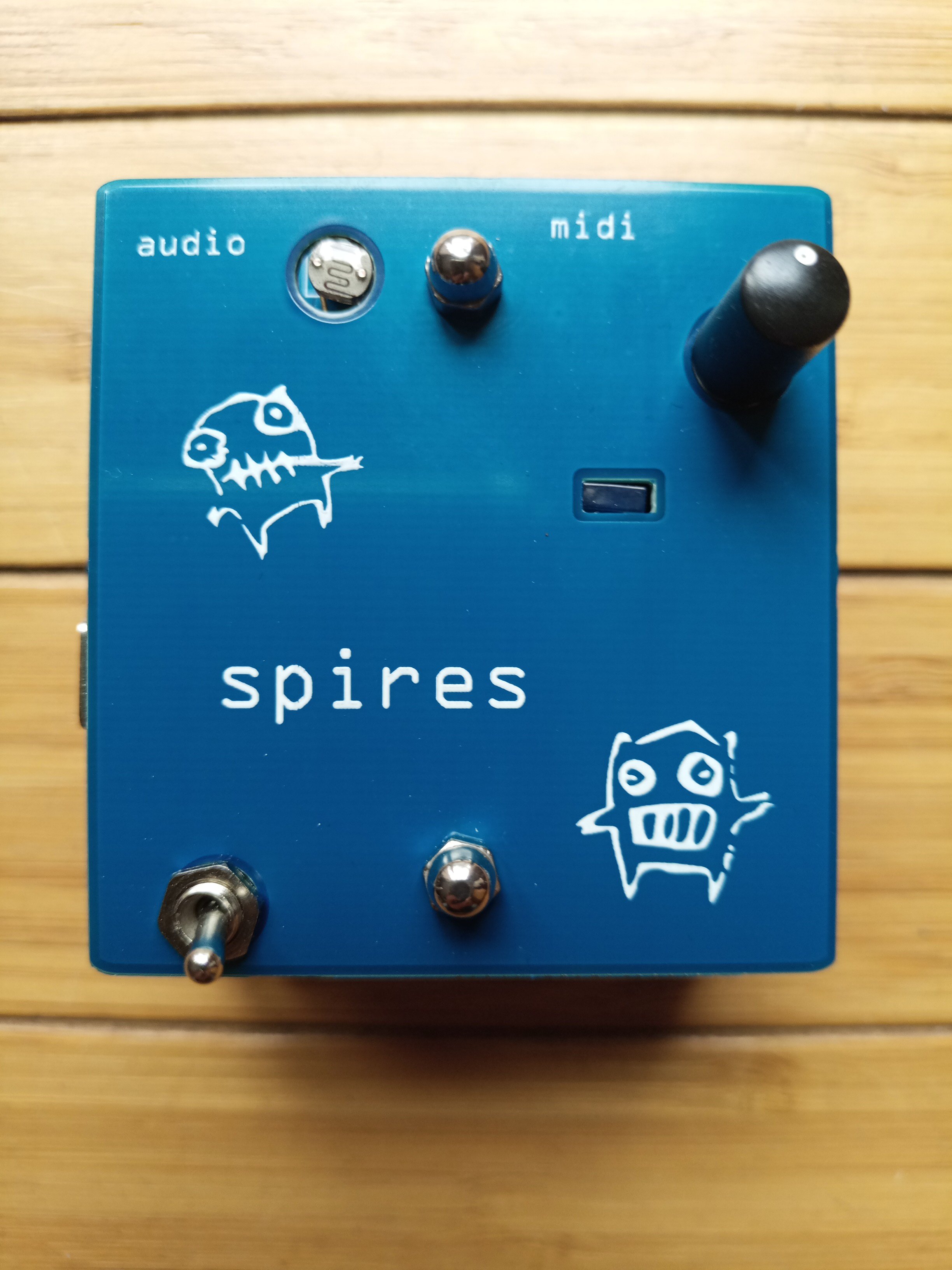spires
Spires is basically a scale arpeggiator theremin made with a laser ’time of flight’ sensor :)
I made it to play ragas, by their nature consiting of ascending and descending passages. Spires also has a continous tone mode so it can play more like a traditional theremin.

a scale monster
The completed version seen here sends midi and here are two examples of playing duets (with a neutron):
Here playing a traditional mode (spires has all of them 7 times 12) …
And here playing a raga (sort of :) …
For vibrato/volume control, I tried a number of things. In the end, I settled on a simple light sensitive LDR (resistor) since you can place your hand near to it and make fairly ‘fine’ motions like you would doing vibrato on a cello. I like pivoting on a finger just like with a cello much better than free motion above spires.
I wanted it to be small and portable. So it runs on 4 AA batteries. The entire device is dimensioned around the battery holders shape :)
If you would like to purchase a completed version, it’s available on etsy at https://tonetoys.etsy.com/listing/1872836278 or you can buy it directly for 73 euros from me.
If you want to DIY: Open Sources includes fritzing files, and a folder of firmware. Gerber files are also in the repo, so you can just directly have it made by a pcb house….
Instructions
It’s kept fairly simple :)
- At startup, Spires is in the Modal program bank. Turning the encoder wheel (black thingy) selects: Ionian, Dorian, Phrygian, Lydian, Mixolodian, Aeolian, Locrian. In the traditional order
- Pressing the encoder button down in a mode increments the root/key, for all 12 from C to B. So you can play all the modes in any key.
- Hold the encoder button down and turn the encorder to change program bank
- In all program banks except the first, modal, pressing the encoder button short once switches to the chromatic and short click twice for scale mode.
- Long pressing (1 seconds) encoder button sends a noteOFF for all notes and holding for 2 seconds switches between sine wave and triangle.
- The space from spires at a distance of 850mm - 1300mm is a dead zone used to turn off the sound/midi. There are 150 mm space from the deepest not to this point.
- At the back is a small switch which lets you turn off the light dependant resistor which can be handy, for instance, in the dark :)
That’s it, really.
Older material
This is the first production version, not quite complete.
This is the first attempt on breadboard.
Firmware
There’s a bunch of firmware experiments in progress. I’ll post more information as it becomes ‘stable’. To install or update firmware use https://poetaster.org/webflasher , the chrome based flasher, with the limitation that it works in edge and chrome only. Of couse, you can get the source on github and just use the arduino ide :)
Other projects like it ….
After I started on this, I found a couple of similar approaches. The Luminiferous uses a more powerful processor (I’m using an arduino 328p) and two TOF sensors, but it similar https://extkits.co.uk/product/luminiferous-theremin-kit/
I’m sure there are others :)